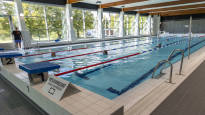To a decreasing extent, in Finland’s largest cities, training sessions for children and young people are free of charge.
The city of Jyväskylä made headlines earlier in September when the city waived free training sessions for under-18s. For example, Helsingin Sanomat wrotehow in floorball a player’s season fee can increase by, for example, 50 euros.
Executive director of floorball club O2-Jyväskylä Krista Karhunen told the newspaperthat the city of Jyväskylä’s cuts will cause the club additional costs of approximately 25,000 euros.
However, the solution of the city of Jyväskylä is part of a larger trend in Finland’s largest cities.
A year ago, the data collection done by the Department of Health and Welfare for municipalities revealed how more large cities than before charge fees for the use of school gymnasiums during training sessions for children and young people.
In Finland, large cities are defined as cities with more than 50,000 inhabitants. In 2020, in the same data collection, there were 11 large cities in Finland that had free training sessions for children and young people in school gymnasiums. This year, there are only nine of them, while in three years, in addition to Jyväskylä, Kouvola had already removed the free of charge.
The group is about to be reduced to only eight, when Turku already announced in the spring that starting in 2025, its sports facilities will be available for a fee for children and young people.
The chairman of the sports committee of the city of Turku Sini Häkkinen (collective), however, savings are not sought with this reform. According to Häkkinen, the city will put an additional two million euros into its operating budget and thereby invest more in sports.
Turku compensates for becoming paid with so-called with a hobby card. Every year, the city of Turku gives every citizen of Turku between the ages of 7 and 19 a voucher for the fees for guided and regular sports activities of clubs and associations in Turku.
In addition, Turku is increasing its support for exercising in private sports facilities. In the past, Turku has cleared 50 percent, but from 2025 it will be 70 percent.
– By calculation, we will have about 30 percent of the prices of sports places for children and young people. With the hobby card, we aim to offset the increased prices. The ultimate goal is that the net costs of the hobby would decrease. The main goal is that more and more children and young people from Turku take up sports, says Häkkinen.
In some cities, prices are rising
In Kotka, the prices of sports facilities will be increased by five percent in club activities for adults, because the city needs additional income to balance its finances. In Kouvola, there are plans to increase taxis and fees for adults by an average of ten percent.
Even in Espoo, more fee income is collected in the economic adjustment program. The chairman of Espoo’s sports board Leo Heiskanen According to (SDP), the prices of swimming pool tickets are probably going up.
– Swimming pool fees have been increased very little here, if you look at it in terms of several years and compared to others. The prices will rise moderately, Heiskanen describes and says that he would not like swimming pool prices to rise above Helsinki and Vantaa.
Heiskanen admits that he sees a contradiction in the fact that, at the same time, there is talk of encouraging exercise and increasing the fees for sports facilities.
– When the council becomes a frame, you have to act within them. If you have to cut x million euros, then you have to cut somewhere or raise fees. We do not want to cease operations. We prefer moderate increases, says Heiskanen.
In Finland’s largest city, Helsinki, the starting point is that sports fees would not increase.
Deputy mayor responsible for sports, culture and leisure Paavo Arhinmäki (left), however, the government’s plans to increase the value added tax may still force prices to rise. In sports services, the value added tax has been 10 percent, but it would now rise to 14 percent.
– The VAT increase goes directly to ticket prices. Last year, modest increases were made to cover increased energy and other costs, Arhinmäki explains the situation in the city of Helsinki and refers to swimming pool fees, for example.
